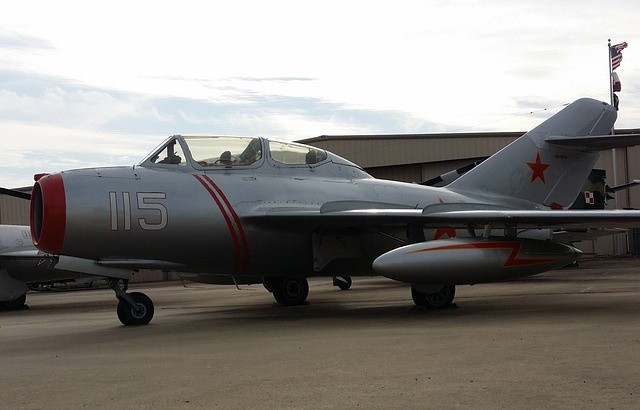
Airpower is one of the best projections of any nations might, and planes like China-made supersonic fighter bomber. Another is the F-100 Super Sabre an American supersonic fighter that flew fast and took America on the supersonic highway in the sky. One is the Chinese made JH-7A strike jet that can attack air to air, or engage ground targets in a bombing or standoff capacity.
From the Korean War to the current standoff between China and America, both countries have exhibited aviation technologies for those times. One is a modern-day supersonic fighter bomber and another is fighter plane that introduced the first sweep wings to fly faster than ever.
Chinese intension to project air power and the ability to strike at ground targets were different from the Korean war that birthed American's supersonic fighter. Both are two aircraft from different eras that reflect what were the popular perceptions of military aeroplanes.
F-100 Super Sabre, an Improved Super Sabre Version
The F-100 Super Sabre is an upgrade of the F-86 Sabre, which is the U.S. fighter of the Korean War. The changes were very obvious with improved performance features. It features a swept back 45-degree wings for better speed performance and a nose intake was a flat elliptical form. F-100 is also called Hun, which is short for 100. It is a modern fighter that gives the Russian fighter plane MIG-16, a run for their money.
This supersonic fighter plane is equipped with a J-57-P-7 turbojet that would pipe in the fuel that enters the tailpipe, with injecting in the jet turbine. It is guzzled in fuel that gave it more thrust to 850 miles per hour at high altitudes. The Hun sets speed records using this technical feature, that was fast for its time.
Also read: Mountain Lion Viciously Attacks 6-Year Old Girl in Park, Saved by Man With Hard Punch in Ribs
The F-100 Super Sabre had some flaws like the tail fin but was somehow got fixed later. Hun was a fast fighter and four 20-millimetre cannons for dogfighting, it had to get close to get the work done. Lack of missiles, long-range radar, and the limited range was an Achilles heel for the Hun. It was slowly replaced by a more capable fighter in 1958.
It's fast speed had an RF-100A high-speed reconnaissance variant with four cameras for spy missions. Later on, they were replaced by the U-2 spy planes in 1956 for this role.
JH-7A Strike Jet
This Chinese multi-purpose attack platform was unveiled at the Russian Aviadarts (aviation competition). It was not much different from its derivative airframe. One of the speculations is that Chinese engineers improved the cockpit avionics with significantly improved radar.
NATO calls the JH-7, by the code "Flounder," but this not up to date because it is not stealth capable. The Xi'an Aircraft Industrial Corporation had blueprints for a dual seater fighter bomber in the '70s that never got approved. It was inspired by the uglier supersonic F-111 America Aardvark strike bomber.
With a side by side layout for pilot and co-pilot for the F-111, it is the first computer designed fighter-bomber with stylings that are the same for the European Tornado, and Jaguar attack jets.
These American and Chinese supersonic fighter-bomber reflect the changes of two Eras. While the F-100 was used in Korean War, the Chinese JH-7 has not been tested in combat. But this uses a fighter-bomber delivery system that might be compromised in an outdated configuration.








